Translating Stem Cells From Laboratory to Clinic
Ontario-area scientists discuss approaches to development of stem-cell therapies.
The creation of therapies using stem cells is still in early stages, with only two such products approved in North America. HEMACORD, a cell therapy derived from hematopoietic stem cells, was approved by FDA in November 2011, and Prochymal, a stem-cell treatment for treatment of host versus graft disease in children, was approved by Health Canada in May 2012. The pipeline, however, is robust: According to a 2013 report from the Pharmaceutical Research and Manufacturers of America (PhRMA), there are 69 cell-therapy products in clinical development in the US, indicating a high level of interest in this class of therapeutics (1).
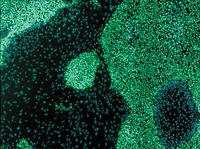
Photo courtesy of the Bhatia Laboratory, McMaster Stem Cell and Cancer Research Institute (SCC-RI)
THE ONTARIO STEM-CELL CLUSTER
The development of stem-cell therapeutics is fueled by an active research effort, with a particularly dense concentration of resources in Ontario, Canada. According to the Ontario Ministry of Research and Innovation, Ontario boasts one of the largest population of stem-cell researchers in North America. The Ontario Stem Cell Initiative (OSCI) is a network of more than 85 stem-cell and regenerative medicine research programs in Ontario, representing scientists from McMaster University, Ottawa Hospital Research Institute, University of Toronto, and University of Western Ontario. The Cancer Stem Cell Consortium, which leverages international collaborations, the Stem Cell Network, and the McEwen Centre for Regenerative Medicine also function to promote collaboration among the area's stem-cell researchers. According to Jason Field, executive director of Life Sciences Ontario, "What really sets us [Ontario-area researchers] apart is our openness to collaborations. Ontario leads many provincial, national and international research collaborations that have furthered our scientific understanding in several research areas, not the least of which is stem cells and regenerative medicine."
The research effort is carried out with an eye toward commercialization. Says Field, "Ontario recognizes the need to turn our world-class research into commercialized technologies and companies that can generate jobs and other socioeconomic benefits. To that end, the province has created the ONE (Ontario Network of Excellence) —a collaborative network of organizations across the province dedicated to assisting innovators, researchers and entrepreneurs commercialize ideas. Included in the ONE are leading accelerators like MaRS Innovation and the Ontario Centres of Excellence."
Toronto is home to the Centre for Commercialization of Regenerative Medicine (CCRM), a not-for-profit organization that focuses on the development of technologies that can accelerate the commercialization of stem cell- and biomaterials-based products and therapies. "We're very focused on cell manufacturing as one of our major pillars. CCRM is an interesting model to consider, because it tries to bring industry and academia together to solve fundamental problems, ones not necessarily centered around someone's IP but more on problems that are holding back industry," says Peter Zandstra, chief scientific officer at CCRM.
Following is a discussion with Ontario life-sciences researchers about the utility of different classes of stem cells for regenerative medicine, as well as discussion of delivery strategies, manufacturing considerations, amd the obstacles in commercialization when developing stem cells as therapeutics.
EMBRONIC AND INDUCED PLURIPOTENT STEM CELLS
Janet Rossant, PhD, senior scientist, chief of research, and Lombard Chair in Paediatric Research at the Research Institute, The Hospital for Sick Children.

Janet Rossant
BioPharm: What are the advantages to studying these types of stem cells, and where do you see them fitting in to the regenerative medicine endeavor?
Rossant: Human embryonic stem cells (ESCs) have been with us for quite a few years. They have been derived from early human embryos derived from in vitro fertilization clinics. These are embryos that would not be used for reproductive purposes. When couples have finished with their fertility treatments, the remaining frozen embryos can be either destroyed or, with the donor's consent, can be used for research. ESCs have been extremely important in showing us the power of these pluripotent cells to generate many different kinds of cells in culture, opening up the possibility that, in the long run, some of those cell types might be used to treat neurodegenerative diseases or traumatic injuries.
There are some issues with ESCs: obviously, there are the ethical concerns about the origins of those cells. Beyond that, given a small bank of ESCs, would we be able to identify a matched patient who required a graft? Obviously not. The new technology of induced pluripotent stem cells (iPSCs) by Shinya Yamanaka and colleagues in 2006 has changed the game in many ways (2). Obviously, the ethical concerns are much less, and now you have the potential to make many different iPSCs from individual patients. In the long run, the hope is that iPSCs could be sources of cells for patient-matched stem-cell therapies. In terms of therapy, however, are pluripotent cells really going to be the future source of stem cells for regenerative medicine? The answer is in some areas yes, and in other areas no. There are already some clinical trials underway with cells derived from ESCs for spinal cord repair and for macular degeneration. There are trials being conducted now, so they can and will be used for certain situations. But for other situations that people are interested in, such as neurodegenerative diseases, I think we're quite a way off from being able to take embryonic stem cells and directly use them as cells to treat patients.
The other exciting aspect of iPSCs is not their direct use for therapies, but their use as models to study the disease process. Because you can take skin cells from a patient who had any kind of disease and make iPSCs from that patient, you now have the ability to model that disease in a dish. For example, if you have a patient with a neurodegenerative disease, and you can make nerve cells from that patient's iPSCs in the dish, you can study the progression of the disease in those nerve cells, and really start to understand what goes wrong in the disease. You can then perhaps develop drugs to treat the disease based on stem cells. I would call that stem cell-related therapies, where you're not actually using the cells themselves as therapy but they become a very important tool to develop treatments for many diseases. That's the advantgage of iPSCs over ESCs. People work on human ESCs to drive their differentiation into different pathways, because they're still the best understood pluripotent cells. With iPSCs, there seems to be more variablity between cell lines when they're made by the induced pluripotent route. We haven't completely nailed the process of reprogramming in those cells, so that we can be sure that they behave like early embryonic cells. There's still a need to keep working with embryonic stem cells. But the two side-by-side become a very powerful tool.
ADULT STEM CELLS
Robert F. Casper, MD, professor, Division of Reproductive Sciences, University of Toronto.
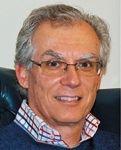
Robert F. Casper
BioPharm: While stem cells can be isolated from embryos, or produced by reprogramming adult cells, there are also populations of tissue-specific stem cells that can be isolated from blood or tissue. How do these cells differ from pluripotent stem cells, and how are they being used clinically?
Casper: Blood stem cells can be obtained from bone marrow, peripheral blood, or umbilical cord blood and are termed "adult stem cells" even though the cord blood cells are actually fetal cells. At the present time, hematopoietic or blood stems cells are the only stem cells that have been consistently used clinically to regenerate an organ (bone marrow) and there are now more than 25,000 cord blood transplants worldwide for treating blood diseases. New research also suggests that these cells may be useful for non-blood tissue regeneration as well. To my knowledge, there are no clinical reports of the successful use of ESCs or iPSCs for regenerative therapy and the safety of ESCs in regard to tumor formation is a clinical concern.
BioPharm: What, generally, are the advantages and limitations of using these types of cells as therapeutics?
Casper: We have focused our research efforts on umbilical cord blood stem cells and we have filed IP on a method to reprogram these "adult stem cells" to give them multi-potential characteristics allowing directed differentiation into almost any cell type. Currently, we are studying the use of these multi-potential cord blood stem cells in animal models of diabetes, peripheral vascular disease, and spinal cord injury. Cord blood stem cells have been differentiated into pancreatic beta cells (insulin-secreting), blood vessels, and neurons and oligodendrocytes (myelin production). The main limitation of cord blood-derived multipotential cells is the reduced ability to expand these cells in culture compared to iPSCs or ESCs, thus resulting in fewer cells to work with. However, a major benefit is the safety of these cells compared with iPSCs or ESCs, because we have never seen any tumor formation despite injecting cord blood-derived stem cells into hundreds of animals.
DIRECT CONVERSION
Mick Bhatia, PhD, director and senior scientist at the McMaster Stem Cell and Cancer Research Institute.
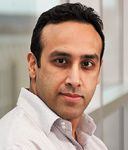
Mick Bhatia
BioPharm: Direct conversion of adult somatic cells into a different cell type is a relatively new technique for producing defined tissue types. Can you briefly describe this process?
Bhatia: The process of reprogramming in this context is direct; that is, you don't have to take a cell from a patient and turn it into a stem cell first, and then grow that stem cell in a dish and redifferentiate it into the cell type you really want for transplantation. Direct means you take a cell type that's easy to get, such as a skin cell or blood cell, and convert that cell directly into another cell type that you want. One example would be turning skin cells into blood cells without having to turn them into stem cells first.
The process is not dissimilar to how Yamanaka has taken skin cells and converted them into stem cells. You start out with exactly the same population of skin cells in a dish, and then you overexpress certain proteins called transcription factors, which can turn on and off genes in those skin cells. In the case of iPSCs, Yamanaka found that four specific transcription factors overexpressed in skin cells will produce stem cells (2). We only have to use one of these transcription factors. By overexpressing one transcription factor, the skin cells start to specialize toward blood. Additionally, you have to have the right culture conditions as they specialize toward blood, which we've been able to optimize. We now know the exact media and other nutrients required to bathe these skin cells in a dish, we introduce this protein that changes gene expression, and the cells start to change over time. It takes approximately 21 days for skin cells to convert to blood cells.
BioPharm: What are the potential benefits and drawbacks of using this approach to generate cells or tissue for regenerative medicine?
Bhatia: The benefit of direct conversion is that, first, it's faster. The process of taking skin cells and then turning them into stem cells and then having to respecialize them into blood cells is a much longer process, more like months, whereas direct conversion takes weeks from going from skin to blood, as we do in my laboratory. The other benefit is safety: there are some concerns that when you turn skin cells into stem cells that the stem cells may have some cancer-like properties. And certainly FDA, as well as others, are concerned that once you specialize those stem cells into the cell type you want, how do you know for certain that there aren't a few remaining cells that could be cancerous when you transplant them? So, direct conversion, by bypassing the stem cell state, allows you not to have to worry about that problem.
As far as drawbacks, one concern is that the number of cells required to have a therapeutic effect upon transplantation in a patient is very high. The direct conversion method doesn't give you the ability to expand the population before you specialize it, which means you have to start out with a large number of skin cells to begin with to get a sufficient number to get a therapeutic effect upon transplantation. In contrast, if you start out with stem cells, you can expand that population and then respecialize. I think the challenges are going to be what particular cell types can be made using direct conversion methods, and what particular therapies will work when we know we can't produce as many cells as we could if we had started with stem cells. I think that currently our understanding is limited, and we really need to understand better as to how we can use direct conversion. In some cases, it's very likely that converting skin cells to stem cells first then respecializing them is much better. The direct conversion technology is still very new, and I think there will be certain diseases and certain therapies where turning skin cells into stem cells first will be better methodology, and there will be others where direct conversion will be the better methodology.
MANUFACTURING
Peter Zandstra, PhD, chief scientific officer, Centre for Commercia-lization of Regenerative Medicine, Toronto.

Peter Zandstra
BioPharm: Why is an understanding of stem cells' interaction with their microenvironment crucial to development of stem-cell-based therapeutics?
Zandstra: One of the big challenges with stem cells is that often they are rare populations, and often they are heterogeneous populations. The environment that we try to control in our bioreactors isn't always the same environment that the cells see in situ. We're trying very hard to isolate and identify the types of environments that one might want to dial in to your bioprocess in order to get stem-cell growth while taking into account the other signals that are endogenously produced either by off-target cells or cells put into the bioreactor that are not part of the population you want to grow. That local microenvironment has an in vivo correlate, called the stem cell niche. The stem cells we want to grow typically are in association with other cell types, or in unique places in our bodies that allow them to be maintained throughout our lives. So the question is, how can we take advantage of the knowledge of where stem cells are in vivo to design better technologies to grow them, ideally at purity, at manufacturing-scale.
BioPharm: Cell-culture condtions are obviously a concern for all cell types. What, in particular, is different about stem cells?
Zandstra: We have to worry about all the same things that one would worry about when growing CHO cells—oxygen, glucose, lactate production. In addition, we have to worry about at least two other things. One factor is cytokine concentrations that are supplemented to the bioprocess, because these cells are often dependent on specific growth factors for their growth and differentiation. These growth factors have their own half lives, their own activity levels, and the dose responses are often quite tight, in that if you added a dose at a certain concentration you'll get mainly stem-cell growth, but if you add it too high or too low you'll lose a population due to differentiation. The other aspect that's different is the heterogeneity. CHO cells, for instance, are a relatively homogeneous population, in that the cells have generally the same function and the same behavior within a bioreactor. In a stem-cell culture, you might start a culture where only one in 10 cells that you're trying to grow, for example in blood stem cells, is a stem cell and you need to deal with this endogenous heterogeneity that is due to secreted factors and interactions with other cell types and control that in order to get better growth.
BioPharm: From a practical perspective, what do you see as the biggest hurdles in being able to produce stem cells at large enough scale and cost-effectiveness for commercial use?
Zandstra: I think we're making great progress in this. I think it's important to clarify that there are different types of stem cells, and so the answer to the question a little bit depends on what type of stem cell we're talking about. The first problem is to develop conditions that maintain high enough purity of the stem cells while still allowing for good growth. What often happens is that stem cells either differentiate when you try to grow them or they don't grow fast enough to get enough cells produced. The other challenge is that often the formulation of how stem cells like to grow is not ideal for scale up. Maybe they grow on surfaces at low density. One has to learn to grow them in suspension, or using technologies that mimic suspension, and intensify the process to get much higher yields and productivity. That's been a big challenge. The third challenge we have to overcome is the cost. Many of the stem-cell culture processes and technologies that are in place are high-cost, small-scale systems that use poorly defined reagents. Moving production technologies to, ideally, chemically defined media, where we can use small molecules or defined components that can be manufactured at scale themselves will make a big difference in reducing the cost of cell production.
DELIVERY SYSTEMS
Molly Soichet, PhD, professor, Chemical Engineering and Applied Chemistry, Canada Research Chair in Tissue Engineering, University of Toronto.

Molly Soichet
BioPharm: Developing stem cells as therapeutics will require specialized methods to deliver cells to specific sites within the body, with the goal either to allow those cells to integrate into host tissues or to remain encapsulated as drug delivery vehicles. Can you discuss the role that materials science plays in developing cell therapy delivery systems?
Soichet: There are three strategies that have required materials science for cell therapy. In encapsulated cell therapy, cells are encased in a polymeric membrane that allows the selective diffusion of biomolecules across the membrane. The idea is that the cells act as growth factor factories, producing biologically-active molecules on demand, as in the case of diabetes, or constitutively, in the case of Parkinson's Disease. The proteins produced by the cells can diffuse out of the membrane and nutrients and oxygen can diffuse into the membrane, keeping the cells encased within the membrane viable and functional. The goal of encapsulated cell therapy is that the polymeric membrane provides stealth properties to the cells within, so that they are not rejected. This method works, but there continues to be challenges with transplanting sufficient numbers of cells to have a therapeutic effect and to have this effect sustained for a sufficiently long time. Immunogenic factors are thought to be too large to diffuse in; however, when encapsulated cells die, they may shed some antigens that lead to an inflammatory response.
In exogenous cell delivery, cells are often transplanted in saline or a minimal medium; however, most of the cells die upon transplantation. In the nervous system, the goal is for the transplanted cells to survive and integrate into the host circuitry. To achieve these two big challenges in the field, the polymeric biomaterial serves to provide a permissive environment for enhanced survival and cell integration. Unlike encapsulated cell therapy, in exogenous cell delivery the goal is to have the transplanted cells migrate out of the biomaterial and integrate with the host. By enhancing cell survival (through the choice and design of the biomaterial), cell integration becomes more likely, leading to greater tissue regeneration and functional recovery.
In endogenous cell stimulation, the resident stem cells are stimulated through the delivery of biomolecules that promote their proliferation, migration, and differentiation. Here again, biomaterials can be used to deliver those factors that are required. Using injectable polymers and controlled-release vehicles, minimally invasive strategies can be developed.
COMMERCIALIZATION
Armand Keating, MD, Epstein Chair in Cell Therapy and Transplan-tation, Univer-sity of Toronto.
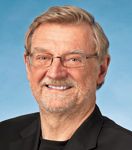
Armand Keating
BioPharm: What do you see as the biggest challenges related to commercialization of stem-cell therapy?
Keating: We can break the issue down into three components. The first issue is funding for preclinical studies that are required to obtain an IND in the US or a Clinical Trial Application (CTA) in Canada. Those studies can be moderately expensive, but the challenge is to find funding, becasue they are not really hypothesis driven. Most evaluation of research projects is based on the quality of hypothesis-driven work. Preclinical studies, however, go a step beyond that. The hypothesis has been established, and there are very good data that may well have been published in outstanding journals. FDA and similar agencies require validation and preclinical data demonstrating both safety and efficacy. Neither of those sorts of applications are going to receive a particularly good score in the ususal study sections, because they'll be competing with more conventional hypothesis-driven research. Here, we're really attempting to validate something—demonstrate its safety and efficacy. Funding preclinical validation studies is an area where I think there's a real challenge.
The second challenge is in moving to the next step, which is scaling-up and performing the cell manufacturing with all the tests that are required, short of actually administering it to a patient. Manufacturing to GMP standards is expensive, and the expectation is that you would do two or three dry runs, which has to be funded somehow. Doing the scale-up studies is absolutely vital, because it isn't necessarily a linear process going from laboratory-scale manufacturing to clinical-scale.
Once a manufacturing process has been developed, the final aspect of moving from the laboratory to the clinic is how to actually fund the cell manufacturing for patients in a clinical trial. Many of these trials are investigator-driven and are not supported by industry. Unlike drug-development studies, which are often supported by industry, industry funding is significantly less common for cell therapies, and therefore more of a challenge to obtain.
It's really the funding, from the initial observation through to the completion of early phase clinical trials, that presents the biggest challenge. Later-phase clinical trials are so expensive that it's unlikely that they can be accomplished at academic health-sciences centers with manufactured cells, particularly prospective, randomized, placebo-controlled trials. It's just enormously expensive to do that.
I think the scientific issues around stem-cell development can be addressed in the usual ways and can compete with hypothesis-driven proposals. Also, I think that now there's pretty reasonable experience both at academic centers and also in industry to deal with many of the regulatory issues—they're not as onerous as the regulatory issues confronting those wanting to do gene therapy, for example—but they're still formidable. But for cell-based therapies to successfully move from the laboratory to the clinic, there needs to be some way of dealing with the expense of development.
REFERENCES
1. PhRMA, Biologics Research Pushing Frontiers of Science With More Than 900 Medicines and Vaccines in Development, phrma.org/track-pdf.php?q=/sites/default/files/2488/biologics2013.pdf, accessed March, 15, 2013.
2. K.Takahashi and S. Yamanaka Cell, 126 (4), 663-676 (2006)
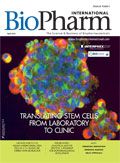
VERAXA and Voyager to Create Combined Business for Advancing Pipeline of Next-Gen Cancer Therapies
April 23rd 2025The proposed business combination would create a publicly traded, clinical-stage biopharmaceutical company that will focus on developing a pipeline of next-generation cancer therapies.
Mastering Antibody-Drug Conjugates
December 19th 2024In this episode, we explore BIOVECTRA’s capabilities in antibody-drug conjugate (ADC) manufacturing, from complex conjugation chemistry to synthesis of highly potent payloads. We’ll also showcase how BIOVECTRA’s extensive experience in complex chemistries and specialized small molecule manufacturing gives them a unique perspective, strengthening their approach to ADC production and ensuring clients receive custom solutions across all project stages.
MHRA Approves GSK Therapy Combinations for Multiple Myeloma
April 21st 2025Belantamab mafodotin is approved in combination with bortezomib plus dexamethasone in patients who have had at least one prior therapy, and in combination with pomalidomide plus dexamethasone for those who have had a prior therapy including lenalidomide.
Tokyo University of Science Research Team Explores Improved Delivery of Antisense Oligonucleotides
April 18th 2025Using cholesterol-modified oligonucleotides, the research team aims to improve the delivery of antisense nucleotide-based therapies for treating neurodegenerative diseases and brain cancers.